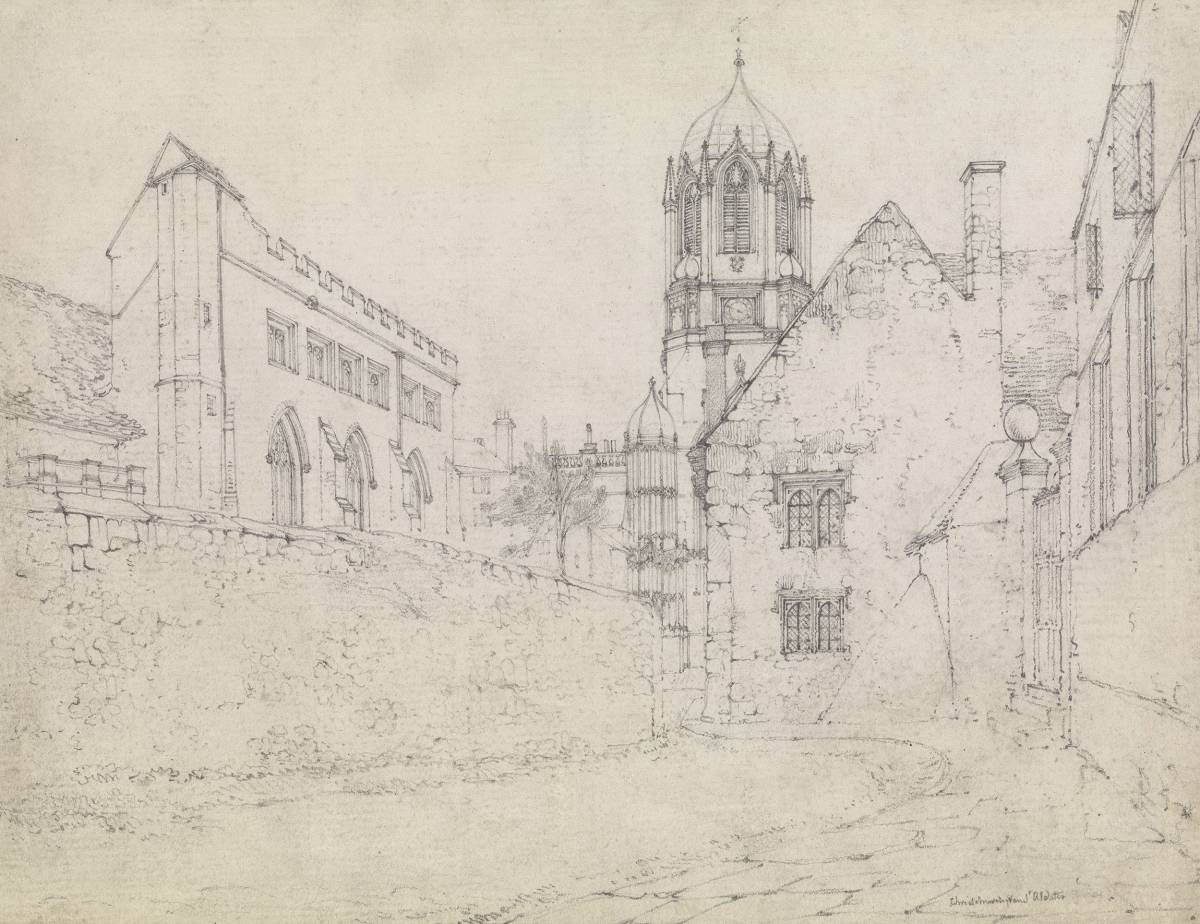This minutely observed drawing was made by Cornelius Varley at the beginning of his career and, in its scrupulous observation of the architecture of Oxford, an early fascination with optics. Almost certainly made whilst Varley was experimenting with some form of drawing device, it reminds us that drawing en pleain air took many forms and unlike the freedom of recording landscape with loose, watercolour washes topographical drawing demanded far greater accuracy. Cornelius Varley did not begin his life as a painter, thanks to the influence of his uncle, Samuel Varley, a watchmaker, jeweller, and natural philosopher, Cornelius began by making lenses and microscopes and assisted his uncle in chemical experiments. When his uncle founded the Chemical and Philosophical Society at Hatton House in 1794 – one of the forerunners of the Royal Institution – Varley assisted with his public lectures. In 1800, however, Samuel Varley gave up his own business and the Hatton House lectures to work for Charles, third Earl Stanhope, and Cornelius Varley determined to become an artist like his elder brother. Instead of undergoing another apprenticeship, he taught himself by sketching from nature in the company of his brother John with whom he lived at Charles Street, Covent Garden. John introduced Cornelius to the influential patron of watercolour artists, Thomas Monro.
This view of Oxford is a particularly accomplished, early drawing, showing Christopher Wren’s Tom Tower over the entrance to Christ Church from the churchyard of St Aldate’s. The meticulously made drawing shows Varley’s interest in the problems presented by capturing the three-dimensional world on paper. This composition relies on a careful system of perspective, showing the various buildings complexly and heavily foreshortened. It may be that Varley used an optical device to help capture this view. Using lenses to help draughtman became a particular passion for Varley and he would go on to patent the graphic telescope in 1811.


